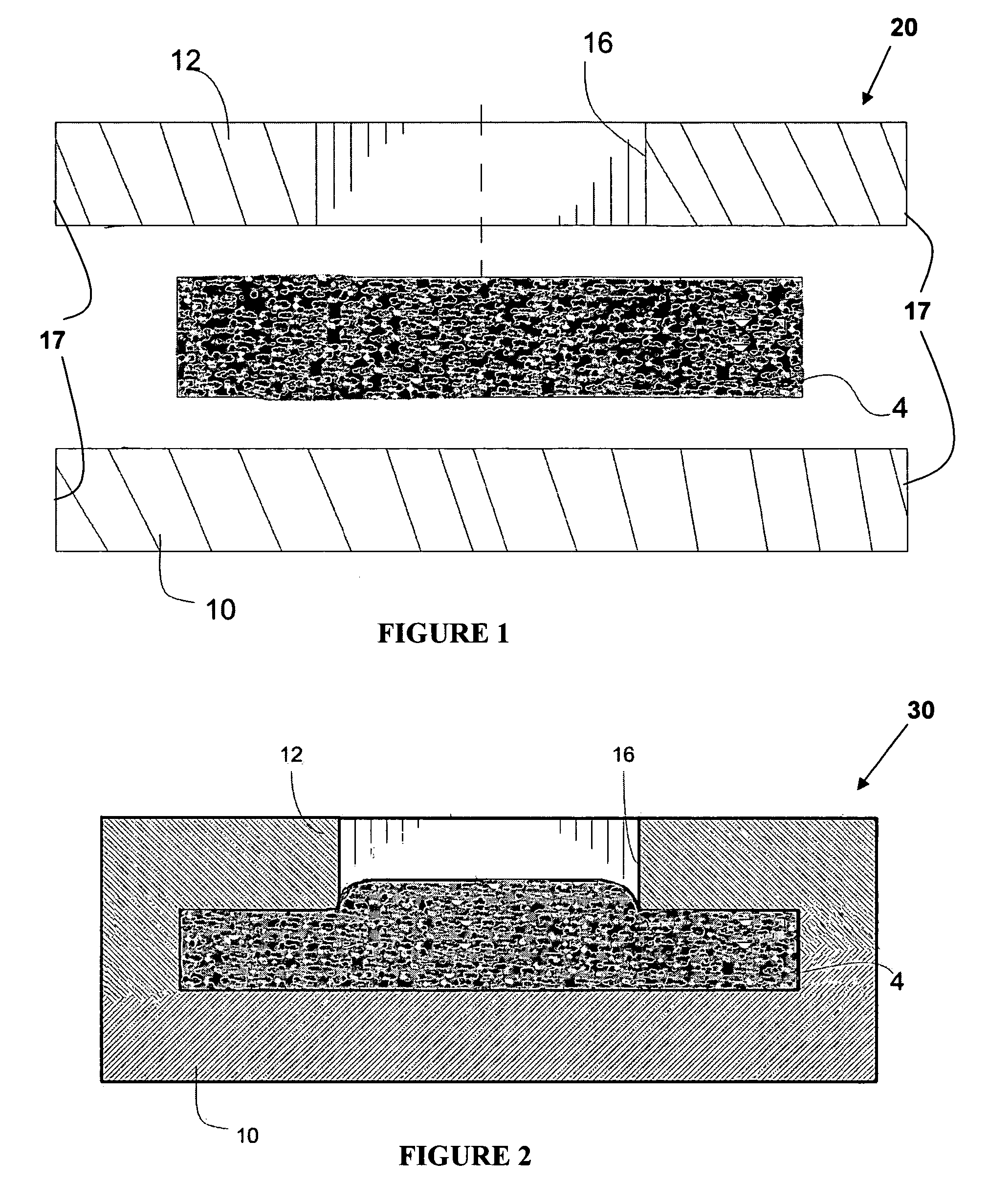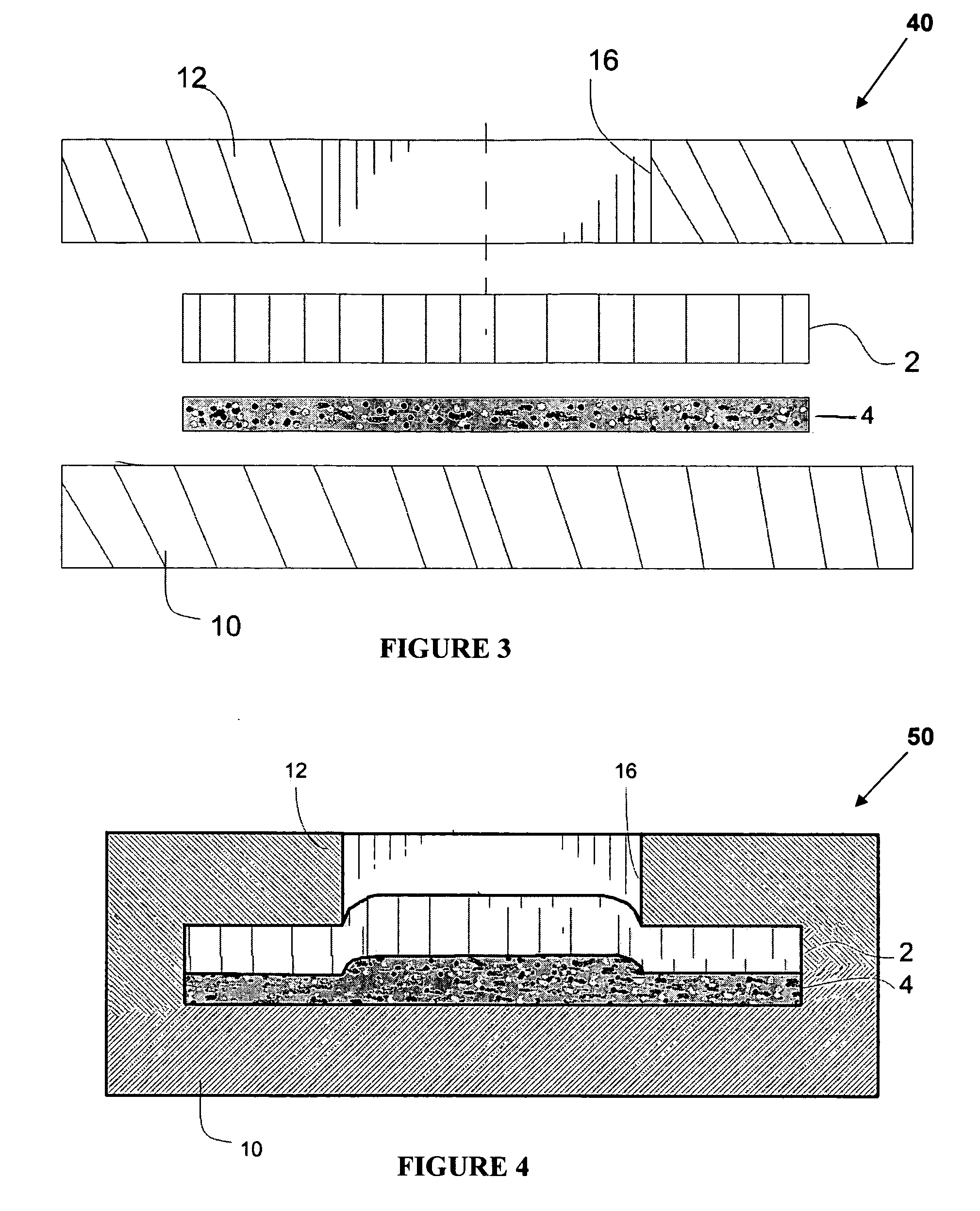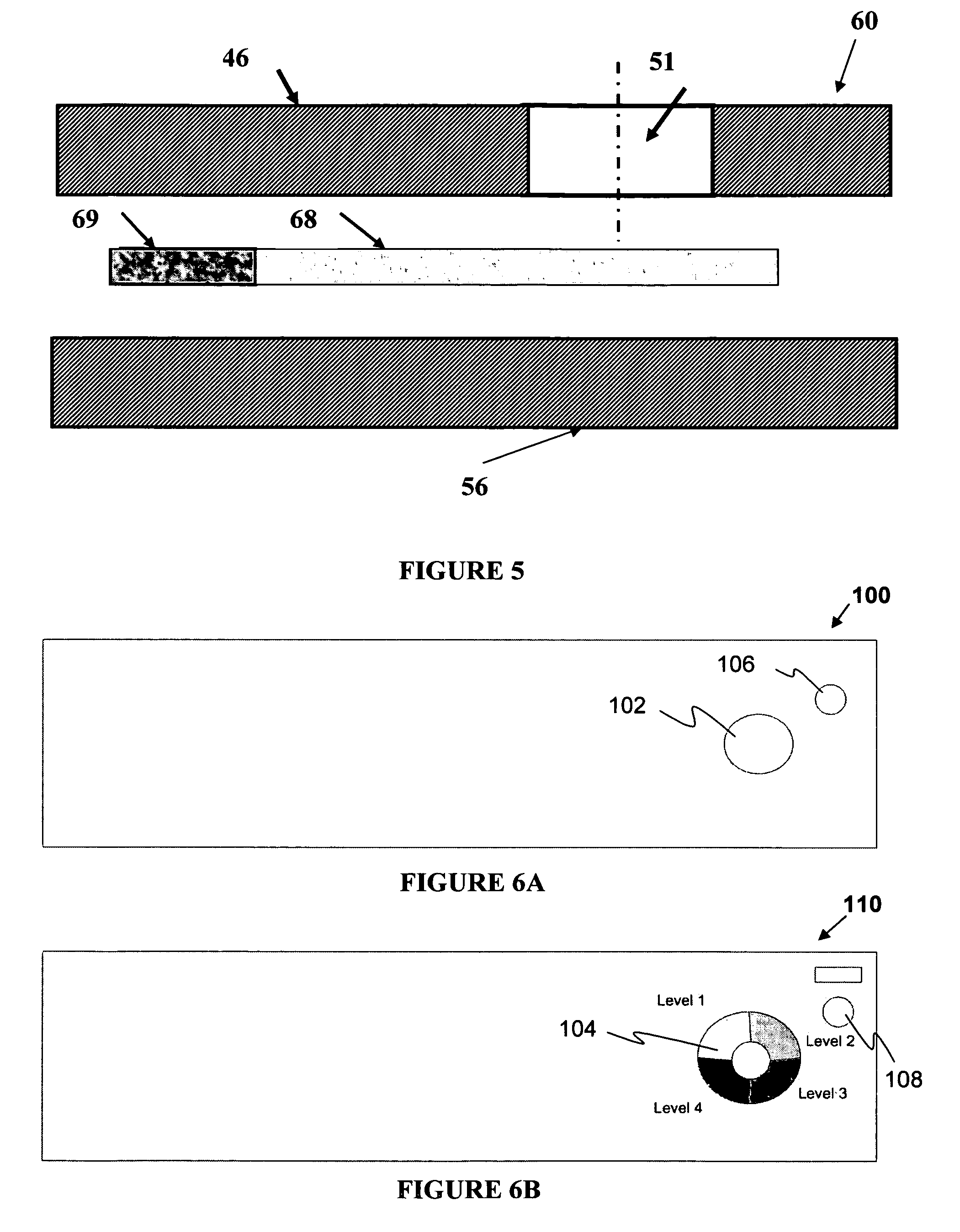Detection of poisons in materials such as food using colorimetric detection
a colorimetric and food technology, applied in the field of detection cards or tabs, can solve the problems of threatening to poison unsuspecting random people around the world, lack of systematic determination methods, and high cost, and achieve the effect of high reliability and simple construction
- Summary
- Abstract
- Description
- Claims
- Application Information
AI Technical Summary
Benefits of technology
Problems solved by technology
Method used
Image
Examples
example 1
[0087] In this example, the following chromophore solution and supports A, B and C are used: [0088] Chromophore solution: 0.5 gm NH4Fe(SO4)212H2O in 10 ml DI Water. [0089] Support A: Chromatography Paper #1 (e.g., Whatman CHR #1). [0090] Support B: Chromatography Paper #3 (e.g., Whatman CHR #3). [0091] Support C: Flexible Plates as used for TLC with 250 silica particles (e.g., Whatman PE SIL G).
[0092] The foregoing listing of specific products is intended to be illustrative only, and not to limit the usage or applicability of the invention. Other similar materials than specified can be used for the same functional purpose.
[0093] The chromophore is made by placing a small quantity of the solution on the support and air drying to remove the water. The typical quantity of solution used is 10 microliters, although any suitable amount of solution appropriate to the determination can be employed.
[0094] This chromophore is stable and responds calorimetrically to various poisons. Azides ...
example 1a
Color Viewed From Same Side as Sample Introduction Port
[0095]FIG. 11A in the left-hand portion thereof, shows a top section of the support 500 including a sample introduction port 502 therein. The right-hand portion of FIG. 11B shows the bottom section of the support, with the chromophore 504 mounted on the support for presentation of the chromophore to the sample introduction port 502. The top section of the support is mated with the bottom section, as indicated by the arrow between the left-hand and the right-hand portions of the drawing.
[0096]FIG. 11B is a cross-sectional elevation view of the chromophore assembly of FIG. 11A, showing incident radiation A and reflected radiation B from the chromophore 504, in which the colorimetric change is viewed from the top of the assembly.
example 1b
Color Viewed From Opposite Side to the Sample Introduction Port
[0097]FIG. 12 is a cross-sectional elevation view of a chromophore assembly of the type shown in FIG. 11B, but wherein the colorimetric change is viewed from the opposite side to the sample introduction port. The reference numbers in FIG. 12 correspond to those of FIG. 11B.
PUM
 Login to View More
Login to View More Abstract
Description
Claims
Application Information
 Login to View More
Login to View More - R&D
- Intellectual Property
- Life Sciences
- Materials
- Tech Scout
- Unparalleled Data Quality
- Higher Quality Content
- 60% Fewer Hallucinations
Browse by: Latest US Patents, China's latest patents, Technical Efficacy Thesaurus, Application Domain, Technology Topic, Popular Technical Reports.
© 2025 PatSnap. All rights reserved.Legal|Privacy policy|Modern Slavery Act Transparency Statement|Sitemap|About US| Contact US: help@patsnap.com



